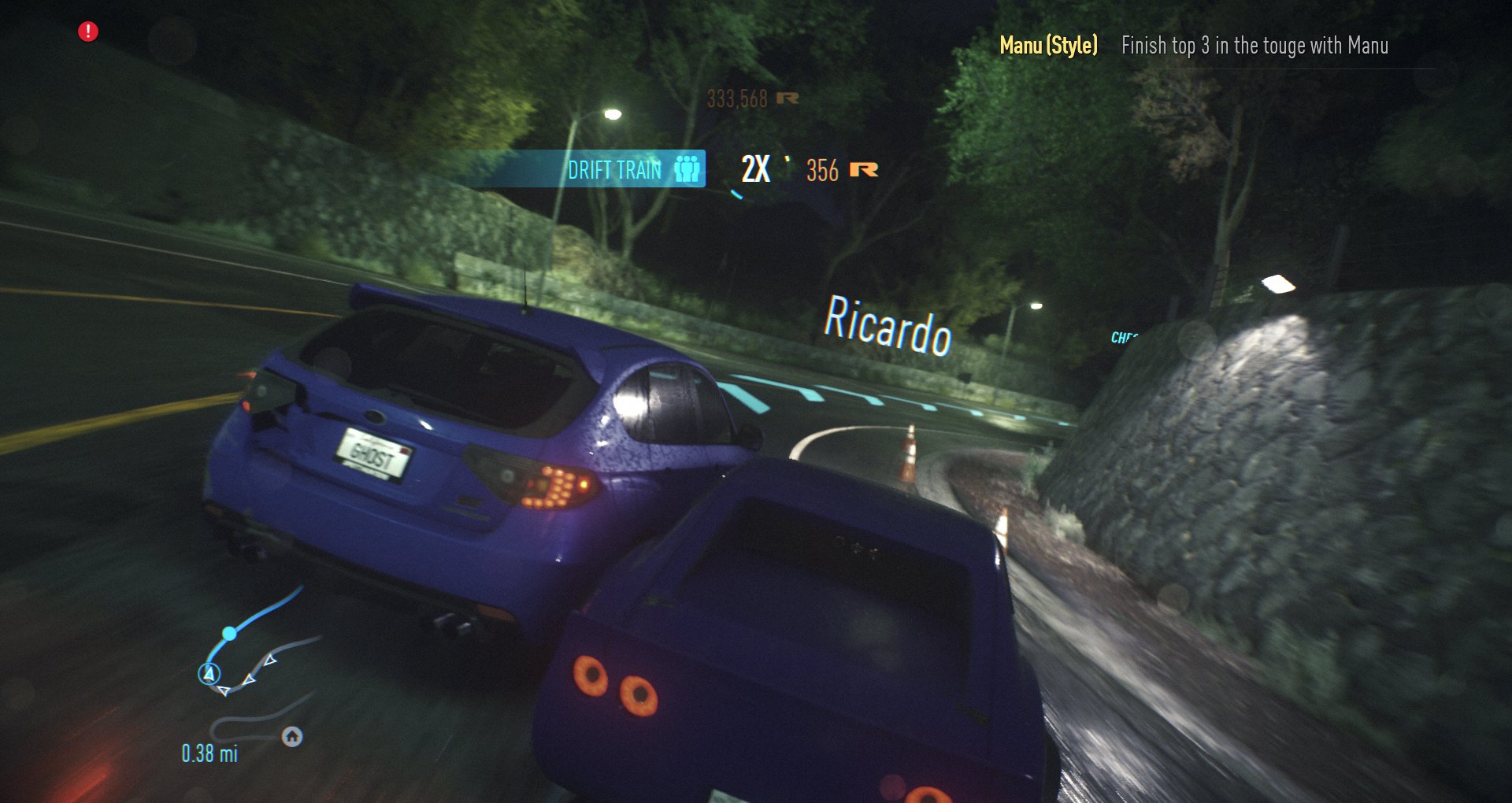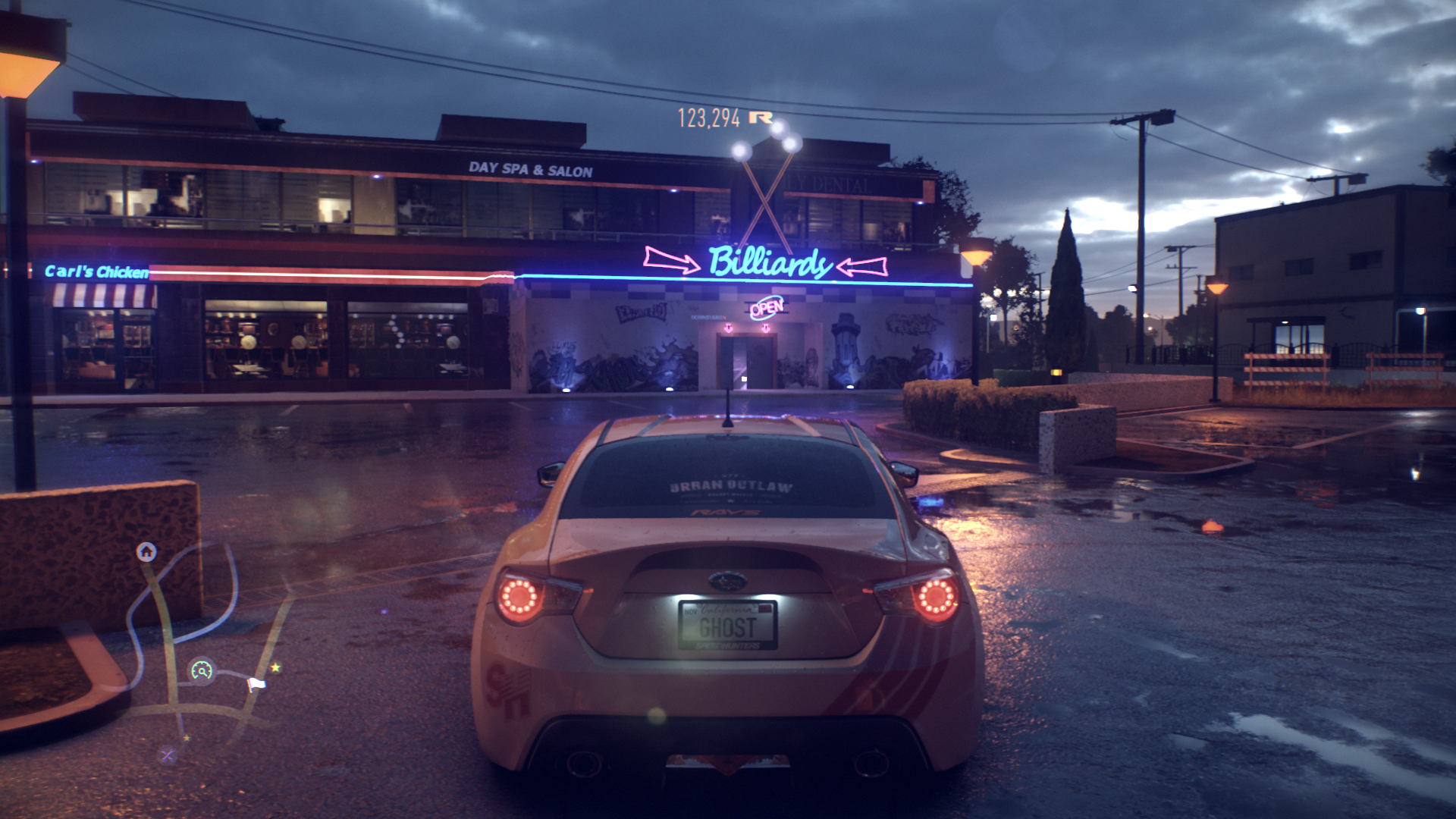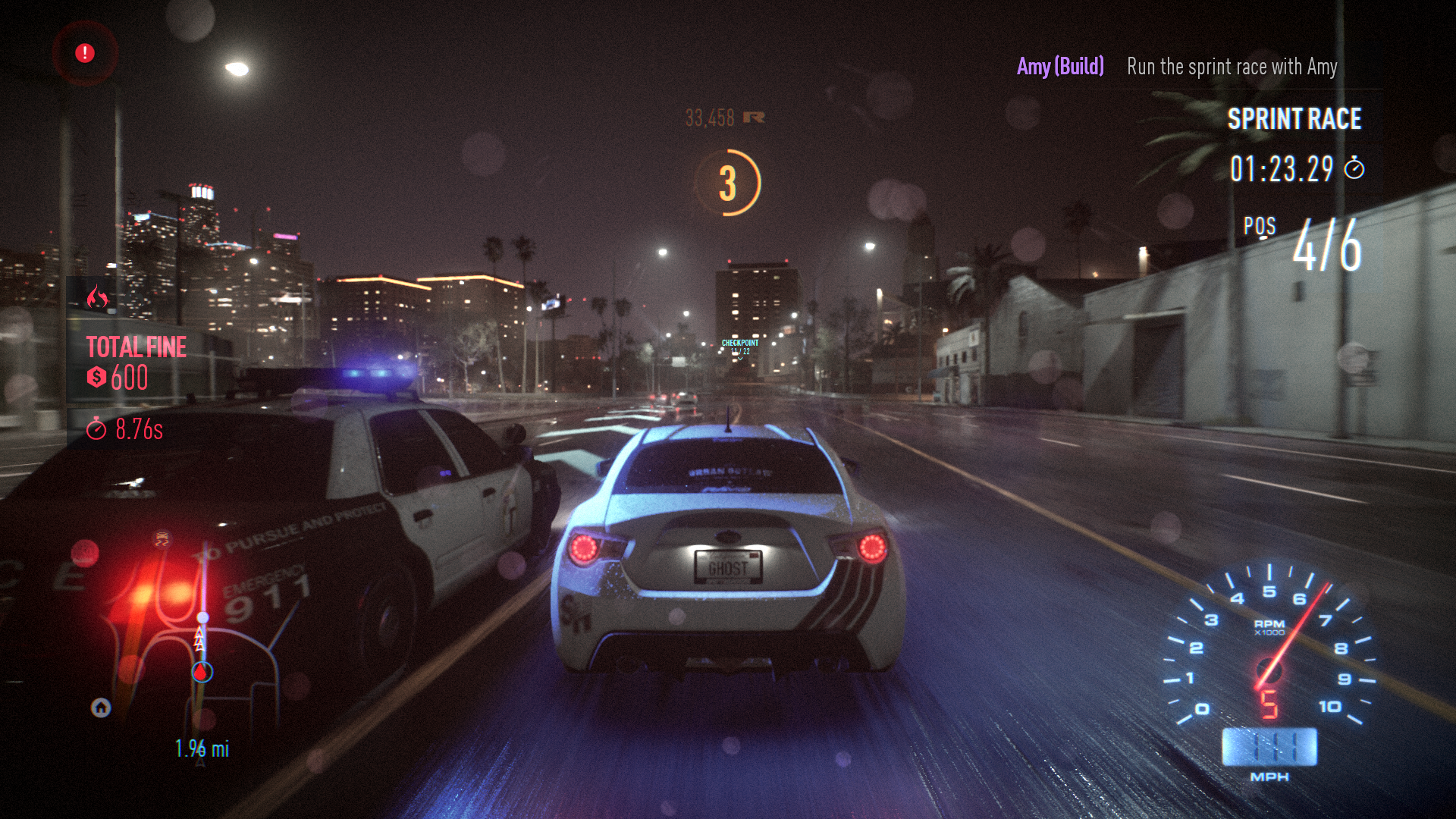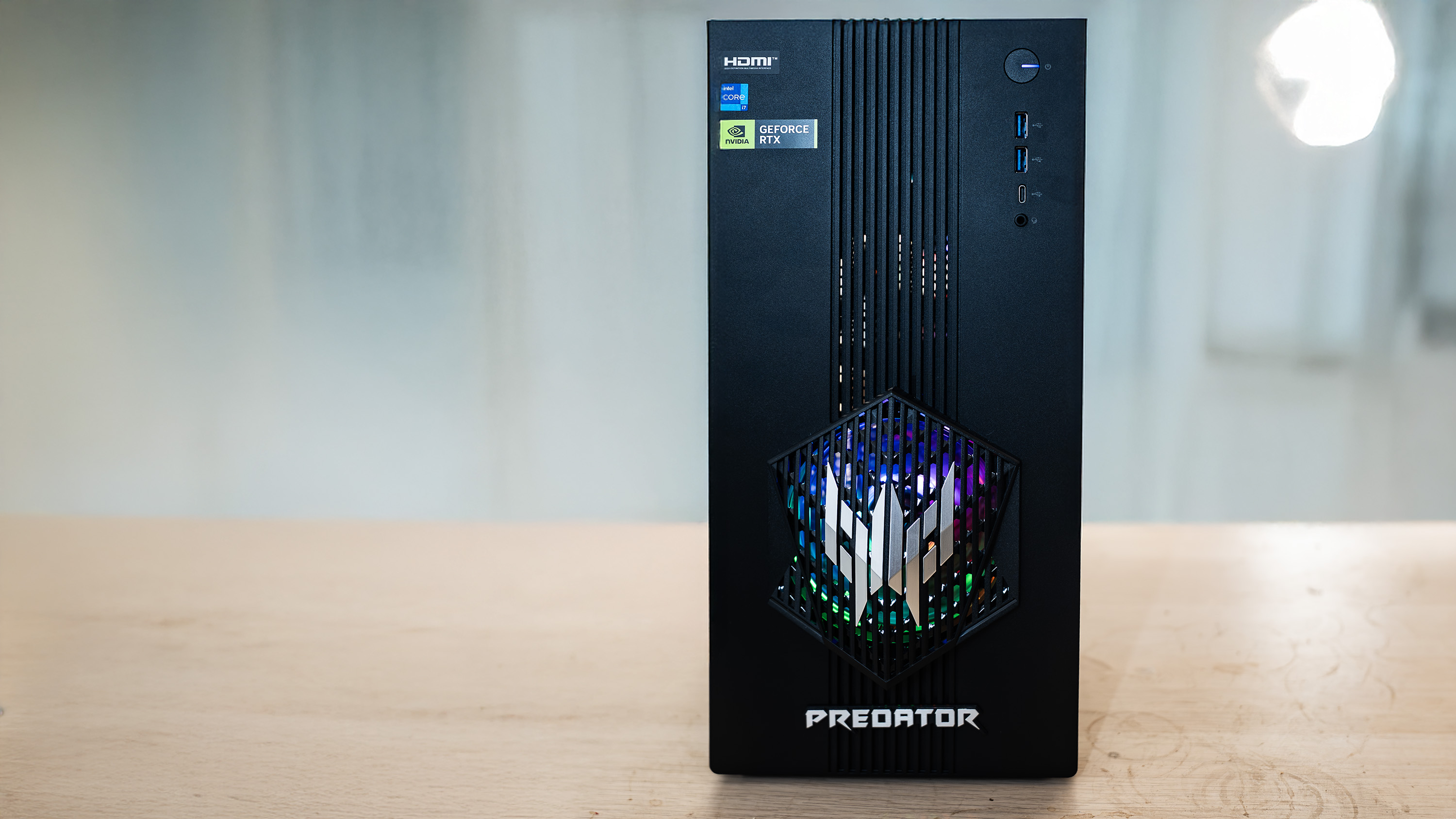Our Verdict
The series leaves its garage looking even worse than when it went in. Decent handling doesnt save it.
PC Gamer's got your back
What is it? An open-world driving game delving into street racing and tuner culture.
Reviewed on: Intel i7-980X 3.33GHz, 9GB RAM, Nvidia GeForce GTX 980 Ti
Price: $60 / £50
Release date: March 8, 2016
Publisher: EA
Developer: Ghost Games
Multiplayer: Online
Link: www.needforspeed.com
It's like a nightmare. You're trapped in LA and the sun never shines and you’re living out of your car and everyone keeps talking to you about driving techniques. When they’re not talking to you in person, they’re calling you all the time. It’s hell. This is the setting for the first exclusively new-gen Need for Speed, which launched on consoles in November last year. After relatively unimpressed reactions, its developer Ghost Games has used the interim to give its PC port a tune up.
There's now manual transmissions, additional steering wheel support, an unlocked framerate, 4K resolution, and new cars and customizables courtesy of both the Icons and Legends packs.There’s a strangely heavy story component to this new Need For Speed. You play what is essentially a voiceless camera who hovers around a bunch of nocturnal street racing enthusiasts as they ignore the fact you never speak, driving from diners to bars drinking—as everyone is keen to point out—coffee. Your buddies are all depicted by good-looking people in live-action cutscenes, who talk in a vaguely convincing street racing lingo. Your hero, this floating camera, is somehow able to operate an automobile, and because your crew acknowledges you'll never know human emotions like love and joy, they instead race you for ‘street rep’. The more you win, the higher your rep, the more cars you can buy.

Handling is satisfying. Tires grip the road and motors have a heft they makes it seem bodies are really sinking into their suspension, and tune-ups, whether geared towards racing or drifting, feel markedly different. The problem is Ventura Bay. In heavily referencing LA’s grid-based layout you can sometimes complete an entire race without touching the brakes, only occasionally dealing with a sudden right angle turn.
Although Ghost claims to have lessened rubberbanding AI, it sometimes feels like you’re only driving at the speed they designate: grazing scenery sees you drop multiple places, but you can sometimes spontaneously leap from first to last as opponents all seemingly drive over banana peels. Winding canyons and tight docks introduce a new problem: drifting. Going sideways requires reconfiguring your entire car, and without a middle ground between driving fast and drifting well, you can’t do both at the same time. Powersliding in a standardly-balanced ride demands high speed, but reaching that speed takes ages, and it's reduced instantly when you do drift. It’s needlessly tricky to maintain momentum.

It’s more a tonal tribute to LA, the city at twilight after the parties have died
There are several event types, and activating them involves engaging your awful posse who phone you multiple times mid-race. Robyn calls to offer drift challenges, speedy Spike’s all about point-to-point sprints, Amy doles out time trials, and silly-haired leader Manu incorporates all the disciplines into his lot. It’s astonishingly seen-it-all-before, just as it was in 2012 with Most Wanted. Even import and tuning culture, the whole point of this game, boils down to customizing like you’ve done in a dozen other racers. Apply decals, paint rims, tweak suspension, lament the passing of time.
There’s a whiff of promise in bad boy Outlaw’s cat and mouse challenges with cops, but LA’s police force is terribly implemented. They’ll tail every few minutes telling you to pull over, at which point you can either do so and pay a fine, or not do so, because literally why would you in an underground driving game, and attempt to outrun them. Losing hefty chunks of change if you’re caught is a supreme annoyance. There are no paint-trading battles or spark-filled crashes, just an inconvenience you have to settle before moving on. They interrupt events too, which is less welcome than an ugly streaker during the Super Bowl. This is a racing game punishing you for racing.

Side activities are scant. You can hunt for doughnut spots in which you spin your car round in a little circle for points before driving off sad that it didn’t involve Krispy Kreme in any way. You can also find new parts, and sniff out designated scenic views by driving up to, say, a graffiti mural and pressing the relevant button to take a picture when prompted. They’re poor uses of an otherwise visually stunning world that captures LA’s (sorry, Ventura Bay’s) imposing gloom like few games before it, at least from the perspective of a person driving through it very fast.
Keep up to date with the most important stories and the best deals, as picked by the PC Gamer team.
The city won’t chime with memories so much as it will resonate with senses. There’s loose riffs on the Griffith Observatory and Hollywood Hills, sure, but it’s more a tonal tribute to LA, the city at twilight after the parties have died and before the trash is collected. A pumping contemporary soundtrack adds to the urban atmosphere, and this PC version adds more tracks. While Ventura Bay is great for pictures taking, the nature of the racing also means it’s uncannily empty to drive through, resulting in a lush but lifeless location.
Need for Speed, then, feels like the tutorial for a deeper racer, or the barebones bit you can play while the rest of the game downloads in the background. It’s not only boring, but so bereft of ideas that it represents a series running dangerously low on creative fuel. The hazard lights are blinking.
The series leaves its garage looking even worse than when it went in. Decent handling doesnt save it.


